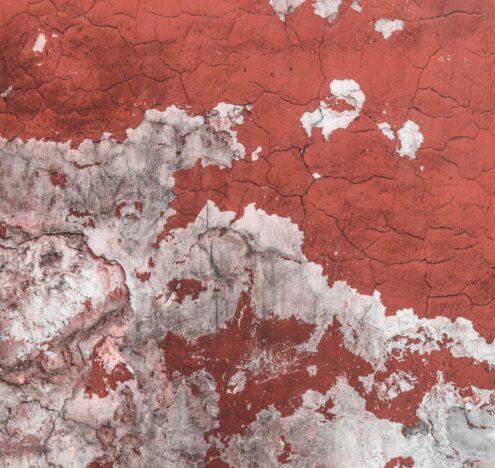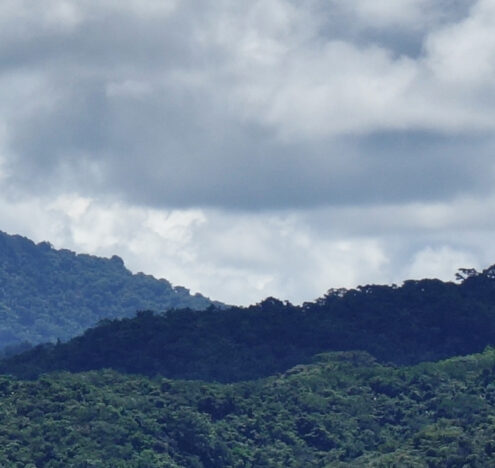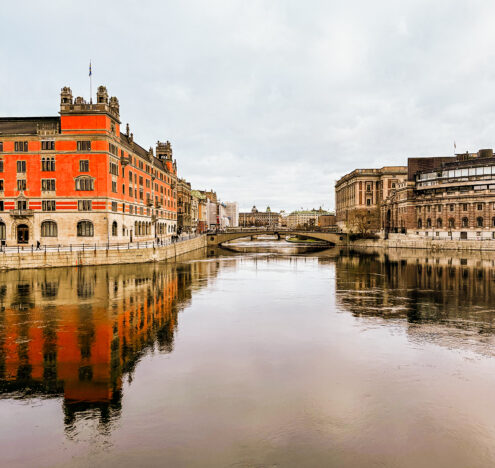About 20 miles off the coast of Niigata prefecture, Sado Island boasts the sixth-largest landmass in the entire Japanese archipelago. Belying the craggy, leafy topography of the island are over 50 mines whose history straddles Japan’s traditionalism and industrialization.
The first part of this history starts with the Edo period (1603-1867). Upon the demise in 1598 of Toyotomi Hideyoshi, a powerful warlord who unified Japan in 1590, one of his vassals, Tokugawa Ieyasu, emerged as one of the most powerful figures in Japanese history. Eventually, Tokugawa dominated other contenders and established a shogunate, or military dictatorship, in 1603. That same year, he took direct control of Sado mines and funneled mining experts to the island to extract gold and silver to finance his regime. Based in Edo, current-day Tokyo, the Tokugawa family presided over more than two and a half centuries of peace and seclusion from the world.
UNESCO will have to tread carefully in accepting Japan’s skewed and amputated version of Sado’s history.
Then, the Meiji Restoration in 1868 toppled this feudal society in favor of westernization and industrialization. The seeds of modernization were sown in the previous decade. In 1854, the US Navy Commodore Matthew Perry wrested official access to Japanese ports heretofore closed off to the West with his gunboat diplomacy of threatening military actions for commercial advantages. The influx of Western ideas and practices engendered internal angst as to Japan’s interests vis-à-vis the encroaching world. After much debate and quarreling, young samurais historically opposed to the shogunate announced a new government modeled on modern bureaucracy and technocracy with Emperor Meiji as a figurehead.
Shortly after, in 1869, the Meiji government dispatched a Western technician to Sado Island and installed shaft after shaft using Western techniques. In 1896, the government sold the Sado mines to Mitsubishi Materials. The latter’s ramped-up production of gold and other minerals financed Japan’s chronology of militarism based on technological advances, imperial undertakings, World War II, and the Pacific War.
Of the mines’ twofold history, however, it is the Edo period on which the Japanese government predicated its application to nominate the Sado mines as a UNESCO World Heritage Site ahead of the Feb. 1 deadline. In seeking UNESCO’s endorsement, Japan’s Cultural Affairs Agency cited the mines’ traditional manual techniques of extracting and refining gold perfected during this period. At the same time, South Korea’s Ministry of Foreign Affairs denounced Sado’s candidacy due to Japan’s deliberate omission of the mines’ more recent history of relying on forced Korean laborers for their wartime production in the 1940s.
As the Sado mines become the latest flashpoint in Seoul-Tokyo relations, two questions have arisen regarding Japan’s interpretation of Sado Island: Is it warrantable to cull the history of unsavory elements and sanitize it? And if a place’s history unfolds in a diptych, does a representation of just one side merit the UNESCO World Heritage stamp of approval?
SHROUDING THE MINES IN THE EDO PERIOD
We need to dig a little bit deeper into the Edo period to understand the mines’ Edo appeal in the eyes of the Fumio Kishida administration. The Tokugawa shoguns, or samurai dictators, cocooned Japan by banning Christianity and severing trade and travel relations with the West. Owing to this seclusion from the West, the Pax Tokugawa gave rise to Japan’s distinct early modern cultural and social landscape.
Kabuki actors garbed in gilded silks captivated townspeople with their whitewashed faces and dreamy voices. Woodblock prints of the time depicted scenes of pleasure quarters and drowsy domestic life. The unhinged compositions of subjects suspended in nebulous backdrops profoundly affected Western artistic movements of the latter half of the 19th century. The varying degrees of grandeur and modesty of four Edo social classes defined Japan’s architecture based on wood and clay tiles.
The point of pride emphasized today by the Japanese government is that the Edo forefathers achieved a gold purity of 99.54% — unparalleled anywhere in the world at the time — using just handicraft methods.
The Sado mines buttressed these cultural and social riches, whose total production of 45 tons of gold throughout the Edo period served as the financial lifeline of the Tokugawa Shogunate. In the first half of the 17th century, Sado gold accounted for almost one-tenth of the total global gold output. The samurai regime shipped most of its gold and silver to China as payment for importing foreign manufactured goods.
The point of pride emphasized today by the Japanese government is that the Edo forefathers achieved a gold purity of 99.54% — unparalleled anywhere in the world at the time — using just handicraft methods. Unlike their contemporary European counterparts, no machines and chemicals aided the entire production lines of mining, dressing, smelting, refining, and minting.
One Japanese official views this traditional ingenuity as constituting “the pinnacle of the manual gold production system.” Barry Gamble, an international World Heritage consultant, credits “the gold-mining heritage and the socio-technical systems of the Edo period” for the mines’ unparalleled suitability for the designation as World Heritage.
The Japanese government’s official stance on the mines’ legacy rests on the fact that this distinctly traditional accomplishment derived from “the shogunate’s strict regulations on contact with foreign countries” that left room for Indigenous flourishing. Indeed, the Edo period’s place in history as “the final era of traditional Japanese government, culture and society” feeds into the Japanese push to truncate the mines’ full history in half and insulate their legacy as a timepiece from the Edo period.
THE MINES’ EARLY LABOR RECORD
Despite confining the mines’ history to this supposedly nostalgic and benign narrative of the Edo period, Sado Island had maintained distasteful relations with labor from early on. The shogunate had carted off 1,800 homeless people to the island for slave labor. Not only that, but the Edo authorities also raided and rounded up illegal gamblers specifically to be sent to the island for mining. Approximately 1,800 laborers were estimated to have died on the island in the last 100 years of the Edo period due to poor labor conditions.
Mistreatment of the miners continued into the Meiji era. As of 1897, more than 2,000 laborers on the island produced gold, silver, and copper for Mitsubishi. Instead of placing them under direct payrolls, the company paid third parties who quartered and fed the laborers, and these contractors kept undue shares of the workers’ wages. Meanwhile, overseers restricted their movement and meted out violent punishments. Although Mitsubishi started to employ and pay the laborers directly in 1926, remnants of the injustice persisted until 1935.
THE MINES’ ROLE IN IMPERIAL JAPAN
Besides the mines’ earlier abuse of Japanese people, the abuse occurring on Sado Island had more sinister implications globally. It was a crucial cog in Japan’s imperial designs that relied on minerals, munitions, and forced labor.
Prior to Mitsubishi’s takeover of the Sado mines in 1896, the Meiji government had backed its currency, Yen, with silver from Sado Island. However, as the value of silver depreciated in global markets, Japan found it harder to purchase weapons and machinery from the West. Japan needed an alternative banking and minting system. Then came the 1890s, the decade described by Mark Metzler, a Seattle-based historian of modern Japan, as “when Japan’s Asian empire, gold standard, and foreign borrowing got underway simultaneously.”
When Japan routed China in the First Sino-Japanese War in 1895 to nudge Chinese influence out of Korea, the Japanese government extorted an indemnity of 230 million silver taels, a tally tantamount to about a quarter of Japan’s national income. The Chinese money deposited in England was then converted into the Bank of Japan’s gold reserve, paving the way for the Japanese Yen’s acceptance into the international gold standard in 1897. The Yen now enjoyed easier convertibility and boosted value in the international economy.
Within the next five years after the war, Metzler explains, “Japan acquired the beginnings of an overseas empire … and launched a heavy industrialization program with the building of the state-owned Yahata Iron Works,” whose projects met Imperial Japan’s military needs.
Afterward, Japan shipped off Mitsubishi’s gold from the Sado mines in exchange for Western warships and munitions, which provided sufficient firepower for Japan to win the Russo-Japanese War in 1905. With Russia out of competition for regional hegemony, Japan had a free hand over Korea and imposed a protectorate in the same year until the formal annexation in 1910.
Well into the 20th century, the Sado mines continued to play an important role in Japan’s deepening imperial interests. Imperial Japan’s social and military functions depended on an intricate enmeshing of foreign loans, borrowing, and enterprises abroad, all facilitated by the gold standard and its large gold reserves.
During the 1930s, Mitsubishi expanded its gold production in response to Japan’s heightened military campaigns abroad. After Japan’s invasion of China’s Manchuria in 1931, the company built new facilities on Sado Island to supply additional gold to meet the military’s increasing demands. For the Second Sino-Japanese War (1937-1945), during which Imperial Japan grabbed more Chinese territory, the Japanese military required funding to reinforce its forces stationed in China. In 1938, the expansion of the Kitazawa Flotation Plant for this purpose allowed for the processing of over 50,000 tons of ore per month.
WIDENING WAR AND KOREAN FORCED LABORERS
In 1938, when the Japanese government demanded increased production of minerals for its war effort in China, Mitsubishi failed to meet production targets due to labor shortages prompted by incapacitated miners and wartime conscription. Following the passage of the National General Labor Mobilization Law in 1938, Mitsubishi started to collect forced laborers from Korea in early 1939.
The commonly accepted number of Korean forced laborers shipped to the island ranges from 1,200 to 1,500. The labor records compiled by Mitsubishi’s Sado branch indicate that 1,519 Koreans had been brought to the island between 1940 and 1945. Yet, research in 2021 by Hirose Teizo of Fukuoka University revealed that the number could be as high as 2,300.
The Government-General of Chosun, Japan’s colonial headquarters for Korea, arranged the recruitment and transportation of forced laborers, a series of processes that often involved outright kidnapping and human trafficking. In 1939, as a severe drought devastated agriculture, the government-general enticed Korean farmers to come work in Japan as an alternative to starvation. Employment agencies embellished labor perks and working conditions. To fulfill their quotas, they resorted to the colonial police to forcibly expatriate reluctant laborers. The forced laborers were locked up and surveilled in transit.
In the mines throughout Japan, working 16 hours a day was the norm, while calls for rapid production meant 30 hours of non-stop work. As Japan’s war in China expanded into the Pacific War (1941-1945), the Sado mines transitioned to producing copper, steel, and zinc. As Japan started to lose the war, Hirose explains that Mitsubishi insisted on a 30% increase in production. Due to lung diseases and accidents, however, even healthy newcomers barely made it three years on Sado Island. Toward the war’s end, those left were conscripted into the Japanese military.
When the Chosun Forced Labor Truth Commission, a Japanese civic investigation group, launched a testimony project in 1997, it could find only one forthcoming survivor, Im Taeho. According to Im, the Japanese rounded up young Koreans, promising high pay. The authorities relocated the laborers’ family members to the island to thwart escapes.
Yet, the forced laborers still decided to run for their life. Hirose’s 2021 research found that almost 15% of Korean miners on Sado Island ran away between early 1940 and mid-1943, which confirms how hard life fared for these laborers and the fact they were confined there against their will.
Imperial Japan’s racism against the colonized populations and forced laborers also exacerbated the lives of the Korean miners. One labor manager on Sado Island mentioned “extreme racism” as one of the reasons for strikes. Records from Niigata prefecture revealed that the Japanese managers viewed Koreans as racially inferior.
This was also visible in the unequal labor treatment the Korean laborers received. “All Koreans worked deep inside the mine shafts, whereas the Japanese worked around the exit,” said one of Im’s daughters born on the island. Indeed, Hirose’s research shows how the majority of the most precarious duties — rock drilling, underpinning tunnels, and transport — were assigned to the Koreans.
Discrimination appeared in their wages as well. Mitsubishi unilaterally curtailed the Koreans’ remuneration and diverted a portion to compulsory national saving schemes to prevent them “from wasting their money.” Yet, this practice of depriving the Koreans of cash served to curb fleeing.
Worse yet, what little money was left dried up after being forced to pay for mining tools, food, blankets, and pension. In the end, they could only afford cigarettes. Later, documents from Niigata prefecture’s labor agency indicate that other pending payments for over 1,000 Korean forced laborers seeped into the post-war Japanese government’s coffer.
When the authors of “Land of Greed: Mitsubishi’s Sado Mines and Chosun Forced Labor” embarked on their research for the book, they found not a single survivor “because all the laborers met premature deaths from silicosis and other medical complications.” They had to rely on testimonies from family members of the deceased. Im also died of silicosis-induced lumps in his lungs shortly after his testimony in 1997.
FORGETTING HISTORY
Until their closure in 1989, the Sado mines produced 86 tons of gold and 2,300 tons of silver — and a host of other minerals of undisclosed amount. Yet, submerged and suppressed in Japan’s official narrative and representation of Sado Island to the world are the accounts of the mines’ role in fueling Japan’s imperial dream and wartime forced labor.
Today, Sado city’s official promotional pamphlets boast of a world record set by its mines in 1940 for producing 1,537 kilograms of gold. Not a line is dedicated to who really toiled in the mines for such a record. The same holds true in Japan’s chronicling of the Sado mines’ 400-year history in the UNESCO World Heritage Tentative List. Absent are Mitsubishi’s atrocities. In their place is a narrative that the mines “continued to have a technological impact on the development of mining both in Japan and in the rest of Asia.”
Japan’s presentation of Sado Island as forever wallowing in the Edo period, as Indigenous, beatific, and devoid of foreign entanglement, does not wash away its impurities and mistakes.
Visitors to the Sado mines’ tourist sites are never given the full story either. Even though Japan’s application for the mines’ nomination as a World Heritage Site focuses on the Edo period’s gold legacy, Sado Island’s “World Heritage Tour” herds tourists around Meiji-era facilities. Around here, rubble of eroded stones is left as a ruin without any signs. Yet, this is where the Korean forced laborers had their food every day. A plaque displaying the mines’ chronology goes only so far as to say that “laborers from Chosun started to be mobilized.”
This collective erasure of memory and laundering of history is consistent with the ruling Liberal Democratic Party (LDP)’s understanding of history. The LDP has controlled the Japanese government since the mid-1990s, except for a brief hiatus from 2009 to 2012. Conservatives with revisionist views of history have been pushing for “a nation-centered narrative,” deeming inputs from other countries as “injurious to national pride and national identity.” Notably, the late Abe Shinzo, a former Japanese prime minister from the LDP, catered to the nationalist base of his party by upholding that comfort women had not been “coerced” into service and rejecting “masochistic history” and “apology fatigue.”
Abe’s new regime in 2012 adopted the tenets of a revisionist, nationalist lobbying group, Nippon Kaigi, in guiding Japan’s future relations with history. As a result, Japan’s national textbooks have gradually either watered down or blotted out their texts on comfort women and forced labor. Only one textbook retains the expression “forced emigration” regarding the Korean forced laborers, while all others have replaced it with “mobilization.”
In 2015, UNESCO inscribed a collection of Japan’s Meiji-era sites of industrial revolution as World Heritage, with the condition that Japan take “measures to allow an understanding of a large number of Koreans and others brought against their will and forced to work under harsh conditions, and the Japanese government’s requisition policy.”
Throughout these UNESCO-blessed sites, there were more than 30,000 Korean forced laborers. However, Japan’s Industrial Heritage Information Center, where UNESCO requested Japan to display such information, still denies the element of force and coercion during wartime. Japan avoided mentioning “forced labor” in its 2019 report to UNESCO’s oversight body. Then, in its latest 2022 report, it repudiated allegations of discrimination against Korean laborers.
Sado Island is the latest front in the LDP’s advancement of Japan’s “clean” history. In January 2022, a commission made up of the LDP’s conservative members submitted a resolution to the foreign ministry urging Sado’s World Heritage nomination. The commission elided Sado’s unpleasant history by maintaining that the Edo period had nothing to do with Meiji-era forced labor.
Afterward, Prime Minister Fumio Kishida founded a “history war team” within his cabinet to bullishly spearhead Japan’s own “perception of history.” Simultaneously, Japan’s foreign minister said, “we are not giving any diplomatic consideration to South Korea.” However, Japan’s bid for nomination failed due to gaps in documents submitted to UNESCO. Hence, the Kishida administration filed for the nomination again this year on January 20, 2023, telling reporters beforehand that winning UNESCO’s recognition “is the most important thing.” If successful, the UNESCO World Heritage Committee will review the Sado application in September this year and add it to the 2024 World Heritage Site list.
REMEMBERING HISTORY
Given the Japanese government’s systemic insistence on diluting and purifying its history, it hardly comes as a surprise that all Japanese agencies refer to the Sado mines as “Sado Island Gold Mines.” Yet, Japan’s framework of understanding history reminds us of the power and nature of history, that history is an ark.
The memories of perished souls survive in tattered papers, ruins, and posterity. We cannot float an ark by cutting it in half. Japan’s presentation of Sado Island as forever wallowing in the Edo period, as Indigenous, beatific, and devoid of foreign entanglement, does not wash away its impurities and mistakes. History, after all, flows in a continuum that breathes into the present.
This history of warfare over Sado Island offers another lesson that world history requires our collective responsibility of arching commonality and mending past injuries. “We must construct the defenses of peace in the minds of women and men,” reads UNESCO’s motto. The World Heritage Convention’s purpose is “to promote international solidarity and cooperation to preserve World Heritage.”
Yet, Japan’s true motive for nominating the Sado “Gold” Mines as a UNESCO World Heritage site contravenes the ethos. Annual numbers of tourists to the island have more than halved since 1991, and local residents have lobbied the LDP government for the World Heritage nomination. One Japanese report assessing ways to overcome economic stagnation asserted that Sado Gold Mines’ appointment as a World Heritage Site would generate $400 million in revenues. The New York Times reported that “residents say any debate about Korean laborers is beside the point.” And Tokyo has used the nomination effort to garner support within the LDP and woo voters.
From China to Russia, we are daily reminded of the danger of baleful nationalistic interpretations of history. However, Japan’s disingenuous approach to the World Heritage nomination hurts the very unity of democracy between South Korea and Japan. UNESCO will have to tread carefully in accepting Japan’s skewed and amputated version of Sado’s history. Genuinely accounting for one’s history of war and atrocities differs from waging war against history itself.





















